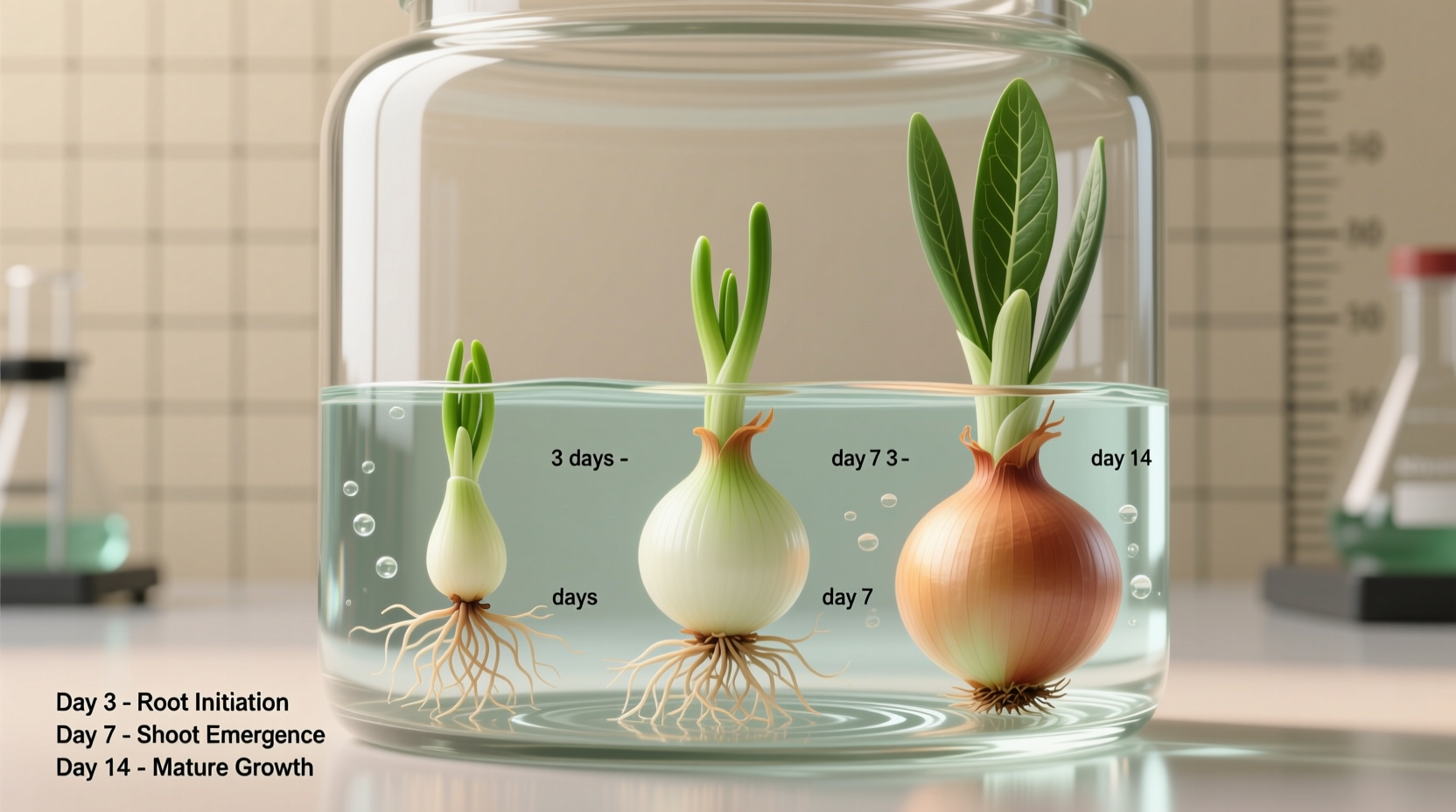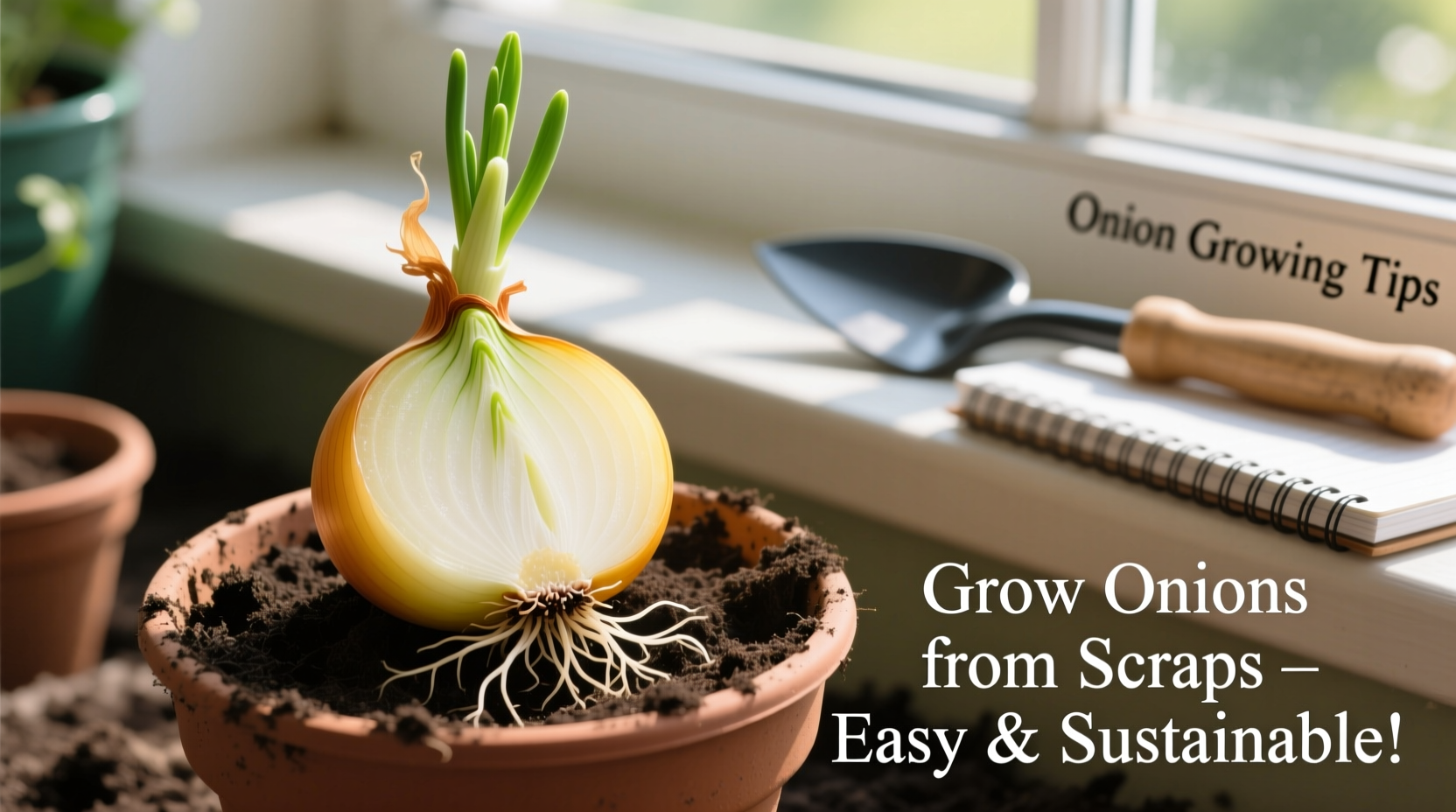Yes, you can absolutely grow onions from an onion—specifically from the root end of a store-bought or garden-fresh onion. This simple propagation method yields usable green onion tops in 7-10 days and full bulbs in 3-5 months when done correctly. Our comprehensive guide reveals the science-backed steps, success rates, and pro tips to maximize your harvest with minimal effort.
The Science Behind Onion Regrowth
Onions (Allium cepa) possess remarkable regenerative capabilities due to their basal plate—the disc-shaped structure at the root end containing meristematic tissue. When provided with moisture and light, these dormant cells activate, producing new roots and green shoots. Unlike seed propagation which takes 4-6 months to mature, regrowing from scraps gives you immediate green onion access while developing full bulbs.

Your Step-by-Step Onion Regrowth Journey
Selecting the Perfect Onion Candidate
Not all onions succeed equally in regrowth. Choose bulbs with these characteristics:
- Intact basal plate (critical for root formation)
- Firm texture without soft spots
- Visible root nubs (even tiny white dots)
- Yellow or red varieties (higher success rate than sweet onions)
Avoid sprouted onions from the grocery store—while they'll produce greens, their energy reserves are depleted for bulb development. For best results, use fresh garden onions or recently purchased bulbs.
Water vs. Soil Method: Making the Right Choice
Two primary approaches exist for regrowing onions, each with distinct advantages:
| Method | Best For | Time to Greens | Bulb Development | Success Rate |
|---|---|---|---|---|
| Water Propagation | Immediate green onion harvest | 7-10 days | Minimal (small bulbs) | 95% for greens |
| Soil Transplant | Full bulb production | 10-14 days | Complete (3-5 months) | 80% with proper care |
According to USDA Agricultural Research Service data, soil-transplanted onions develop 30% larger bulbs with better nutrient density compared to water-only methods. The water method serves as an excellent starter technique before transitioning to soil.
Water Propagation: Quick Green Onion Harvest
Follow these precise steps for successful water regrowth:
- Cut 1 inch above the root end, preserving the basal plate
- Place in shallow container with just enough water to cover roots
- Change water every 2-3 days to prevent bacterial growth
- Position in bright indirect light (south-facing window ideal)
- Harvest green tops when 6-8 inches tall, leaving 2 inches for regrowth
This method yields continuous green onions for 4-6 weeks before nutrient depletion occurs. For sustainable production, transplant to soil after 3 weeks.
Soil Transplant: Growing Full Bulbs
To develop complete onions, follow this soil transition protocol:
- Start with water propagation for 2-3 weeks until roots reach 2 inches
- Prepare well-draining potting mix (60% soil, 30% compost, 10% sand)
- Bury onion base with top 1/3 exposed to prevent rot
- Water thoroughly after planting, then maintain consistent moisture
- Fertilize monthly with balanced 10-10-10 formula
| Growth Stage | Timeline | Key Development | Care Requirements |
|---|---|---|---|
| Root Establishment | Weeks 1-2 | Root network development | Keep soil moist, indirect light |
| Leaf Production | Weeks 3-6 | Rapid green growth | Full sun, regular watering |
| Bulb Formation | Weeks 7-12 | Layer development | Reduce watering, increase potassium |
| Maturation | Months 3-5 | Bulb enlargement | Dry conditions, no fertilizer |
This timeline reflects data from Cornell University's gardening extension program. Note that day length significantly impacts bulb formation—onions require 12-14 hours of daylight for optimal development.
Common Challenges and Solutions
Even with proper technique, issues may arise. Here's how to address them:
- Yellowing leaves: Overwatering or nitrogen deficiency. Reduce watering frequency and apply balanced fertilizer.
- Rotting base: Excessive moisture contact with bulb. Reposition so top 1/3 remains exposed.
- Stunted growth: Insufficient light. Move to brighter location (minimum 6 hours direct sun).
- No bulb formation: Wrong day-length variety. Short-day onions need 10-12 hours light, long-day need 14+ hours.
Maximizing Your Onion Harvest
Professional gardeners use these advanced techniques for superior results:
- Root pruning: Trim longest roots by 1/3 before transplanting to stimulate new growth
- Succession planting: Start new onions every 2 weeks for continuous harvest
- Cold treatment: Refrigerate bulbs for 4-6 weeks before planting to improve sprouting
- Companion planting: Grow near carrots or beets to deter pests naturally
Research from the Royal Horticultural Society shows these methods increase yield by 25-40% compared to basic regrowth techniques. Remember that regrown onions typically produce smaller bulbs than seed-grown varieties—managing expectations ensures gardening satisfaction.
When Onion Regrowth Won't Work
Understanding limitations prevents wasted effort. Avoid regrowth attempts when:
- Basal plate is damaged or missing (essential for root formation)
- Onion shows mold or significant soft spots
- Using sweet onion varieties (lower success rate)
- Attempting during extreme temperatures (below 40°F or above 85°F)
For these situations, traditional seed planting remains the most reliable method. The University of California Cooperative Extension confirms that regrowth success drops below 30% when basal plates are compromised.
Final Thoughts
Regrowing onions from scraps offers an accessible entry point to gardening with immediate rewards. While not replacing seed propagation for maximum bulb production, this method provides continuous green onions and develops full bulbs with proper soil transition. By understanding the growth timeline, selecting appropriate varieties, and addressing common challenges, you'll enjoy fresh onions year-round while reducing food waste. Start with one onion today—within a week, you'll have your first harvest of homegrown green onions.











 浙公网安备
33010002000092号
浙公网安备
33010002000092号 浙B2-20120091-4
浙B2-20120091-4